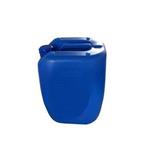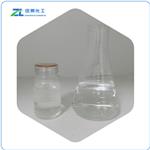Chemical Properties
Water-white liquid. Distillation range, 85% distills between
135C and 140C (40 mm Hg). Hydrolyzes rapidly;
miscible with common organic liquids. Combustible.
Uses
Tri-n-butyl Borate is used as a catalyst in the formation of dihydropyrimidinones under solvent-free microwave-assisted conditions.
Uses
Welding fluxes, intermediate in preparation
of borohydrides, flame retardant for textiles (with
boric acid).
Air & Water Reactions
Rapidly decomposes in water.
Reactivity Profile
Borates behave similarly to esters in that they react with acids to liberate heat along with alcohols and acids. Strong oxidizing acids may cause a vigorous reaction that is sufficiently exothermic to ignite the reaction products. Heat is also generated by the interaction of esters with caustic solutions. Flammable hydrogen is generated by mixing esters/borates with alkali metals and hydrides. Reacts vigorously with oxidizing materials. .
Health Hazard
ACUTE/CHRONIC HAZARDS: Toxic; may emit toxic fumes when heated to decomposition or on contact with acid or acid fumes, local irritant.
Safety Profile
Moderately toxic by
ingestion and intraperitoneal routes. An eye
irritant. Flammable when exposed to heat,
flame, or oxiduers. To fight fire, use foam,
CO2, dry chemical. When heated to
decomposition or on contact with acid or
acid fumes it can emit toxic fumes; on
contact with oxidizing materials it can react
vigorously. See also BORANES and
BORON COMPOUNDS.
Purification Methods
The chief impurities are n-butyl alcohol and boric acid (from hydrolysis). It must be handled in a dry-box and can readily be purified by fractional distillation, under reduced pressure. [O’Brien Aust J Chem 10 91 1957, Gerrard & Lappert J Chem Soc 2545, 2547 1951, Beilstein 1 IV 1544.]




